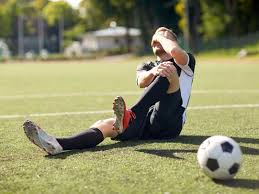A proper diagnosis of sports injuries is key to a full recovery. An orthopedic surgeon utilizes advanced techniques to identify the root cause of injuries and develop customized treatment plans that restore mobility. Here are four ways orthopedic specialists diagnose and treat sports injuries:
Conducting Comprehensive Physical Examinations
The first step an orthopedic doctor takes is to conduct a comprehensive physical examination. During this process, the doctor assesses the injured area for swelling, tenderness, and range of motion. They will also ask about the nature of the injury and the patient’s medical history.
If the physical examination is not conclusive, the orthopedic surgeon will order imaging tests. These tests offer a detailed examination of the body’s internal structures. X-rays are imaging tools useful for identifying bone fractures, while an MRI scan provides a clear view of soft tissues. These diagnostic tools help specialists confirm a diagnosis and understand the full extent of an injury.
Developing Non-Surgical Rehabilitation Plans
An orthopedic doctor often develops a non-surgical treatment plan first because many sports injuries do not require surgery. A common approach is the RICE method, which stands for Rest, Ice, Compression, and Elevation. This technique helps reduce pain and swelling in the initial days after an injury, making it a simple and effective first-line treatment. The specialist may also prescribe medications to manage pain and inflammation. Physical therapy is another fundamental part of non-surgical treatment where a physical therapist works with the patient on targeted exercises to restore function to the injured area.
Performing Surgical Procedures
When non-surgical treatments are ineffective or the injury is severe, an orthopedic surgeon recommends a surgical procedure. Many modern orthopedic procedures are minimally invasive. Arthroscopy, for instance, involves making small incisions and using a tiny camera to view and repair joint damage. This technique often results in less pain, minimal scarring, and a quick recovery time compared to traditional open surgery.
For complex injuries, such as a complete ligament tear or a severe fracture, an extensive surgical procedure may be necessary. An orthopedic surgeon will discuss the details of the operation with the patient, explaining the benefits and potential risks. The goal of surgery is to repair the damaged tissues and restore stability to the affected joint or bone.
Guiding Long-term Recovery
Following any surgical procedure, a guided rehabilitation program is key to a successful recovery. The orthopedic surgeon collaborates closely with a physical therapist to develop a personalized recovery plan. This plan is usually gradual and involves specific exercises to help the patient rebuild strength and mobility. Long-term recovery management is also a focus for an orthopedic doctor. This includes monitoring the patient’s progress through follow-up appointments and making adjustments to the rehabilitation plan as needed. The specialist also provides guidance on how to prevent future injuries.
Consult a Local Orthopedic Surgeon
Orthopedic surgeons employ various methods to diagnose and treat sports injuries. These include physical examinations and complex surgical procedures. An accurate diagnosis leads to the development of a targeted treatment plan. If you have a sports-related injury, contact a qualified local orthopedic specialist to schedule a consultation today.

